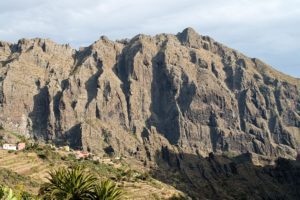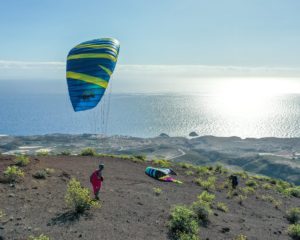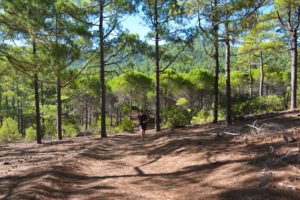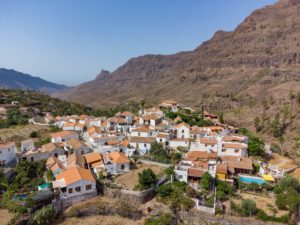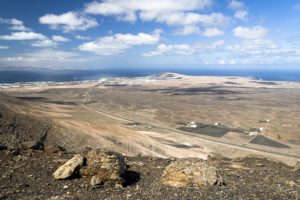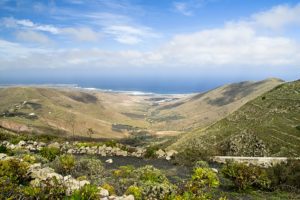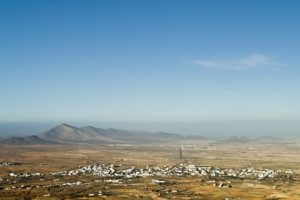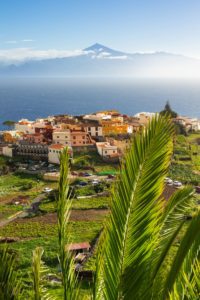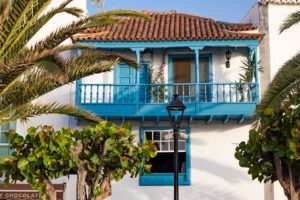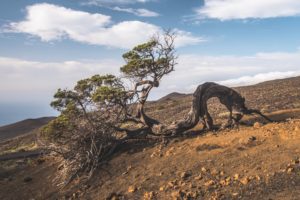The archipelago has 146 protected natural areas that offer a plethora of routes through monuments, landscapes, parks, reserves and sites of scientific significance and universal value.
When thinking about the Canary Islands, many people automatically go to white sand beaches, clear blue waters, or even cheap booze. However, the islands have more to them. About 45% of the Canary Islands’ territory is protected. This includes UNESCO Biosphere Reserves in La Palma, Lanzarote, El Hierro, Fuerteventura and Gran Canaria. Below are just some of the hidden gems that the Canary Islands has to offer.
Tenerife
Beyond Teide National Park, Tenerife may surprise you with the fayal-brezal forests of the Anaga mountain range. You can reach the forests by a path that crosses old farmhouses and terraced crops, leading directly to the sea by descending the Barranco de Masca.
Laura Bethencourt, Official Tourist Guide of the Canary Islands, loves learning and teaching about the traces of the ancient settlers of Tenerife on trails lost in the mountains “that were the only means of communication of the localities two or three centuries ago, or more, so they have a high ethnographic value as well as scenic,” she explains. One is the Camino Real del Sur, between Güímar and Fasnia. It’s a linear route that takes abour four or five hours that joins the Güímar slope with the area of Agaché and the Herques ravine, ending at the old hermitage of Fasnia.
Gran Canaria
In Gran Canaria there are 33 protected areas that extend over slightly less than half of the island’s total surface area. The best known natural parks and protected areas of Gran Canaria are the natural parks of Tamadaba, in the northwest of the island; Pilancones or the Maspalomas Dunes, in San Bartolomé de Tirajana; Inagua, in the west of the island, or the rural parks of Nublo and Doramas, in the center and north of Gran Canaria respectively.
However, there are also hidden hiking routes of great value through historical sites such as the one running through the Protected Landscape of Fataga, San Fernando de Maspalomas and Morro de la Palmita to reach Fataga, in San Bartolomé de Tirajana. This route has the added attraction of walking through the village of Fataga. Its origin dates back to the times before the islands were conquered in 1492. You can find historic buildings among the white houses and cobblestone streets. All this in a natural environment of great beauty filled with Canary Island palm trees.
Lanzarote
In Lanzarote, there are 13 sites marked as Protected Natural Spaces. In addition to Timanfaya National Park, the island also has an integral nature reserve, Los Islotes, and two natural parks: Chinijo Archipelago and Los Volcanes, five natural monuments: La Corona, Los Ajaches, Cueva de los Naturalistas, Islote de los Halcones and Montañas del Fuego, two protected landscapes: Tenegüime and La Geria, and two Sites of Scientific Interest: Jameos del Agua and Salinas del Janubio.
A popular trail among locals is the Ruta de Guinate, which leaves from the village of Ye, in Haría. It is a somewhat challenging circular route that crosses the Volcano of La Corona, one of the tunnels that form the Jameos del Agua, and returns to the starting point. It can last up to eight hours, though it is also possible to do it in sections.
Fuerteventura
Fuerteventura has 13 protected natural areas including the natural monuments of Tindaya Mountain, the slope of Vallebrón, the Cardón Mountain, the Malpaís de la Arena, the Saladar and the Caldera de Gairía. Along with the natural parks of the Dunes of Corralejo and Lobos, Pozo Negro and Jandía, Betancuria Rural Park is the largest on the island, measuring at about 17,000 hectares.
One of the lesser known routes is the Natural Monument of Los Cuchillos de Vigán, within the municipalities of Antigua and Tuineje. This is a circular route covering an area of 6,090 hectares bordering the Malpaís Grande Protected Landscape. It is unique among similar routes for its many rocky islets as you make your way from the Jacomar Volcano to the sea.
La Gomera
At the heart of La Gomera lies one of the relics of the islands: Garajonay National Park, a mysterious laurel forest that has also been recognized as a UNESCO World Heritage Site. Nearby is El Valle de Gran Rey, though lesser known, also contains a beautiful trail, leading to the beaches of the Atlantic Ocean through the small towns of Agulo or Hermigua.
La Palma
La Palma, in addition to the vast Caldera de Taburiente National Park, the mother of all hiking trails, also has 18 other protected natural areas, pristine black sand beaches and spectacular volcanic landscapes. In the Integral Natural Reserve of the pine forest of Garafía, as well as in the Special Natural Reserve of Guelguën or Natural Park of Las Nieves, you will find some of the best examples of laurel forest in the Canary Islands.
Jonás Pérez, Official Tourist Guide of the Canary Islands, highlights the beauty of these routes through the nature of the island known as Isla Bonita, but points out that “there are places within population centers not on the usual routes and that offer a valuable testimony about the hidden past of the people of the Canary Islands,” he assures. “In the upper part of Santa Cruz de La Palma, or in the narrow streets behind the Church of Tazacorte, you can see the beauty of the life of the less well-off people of the sixteenth, seventeenth and eighteenth centuries, at the time of trade with America and sugar cane plantations.”
El Hierro
El Hierro, on the other hand, has its own individual and balanced nature, with seven areas recognized as special protection zones. The Roques de Salmor Integral Natural Reserve stands out among them. A characteristic feature of the coastline are the sea rocks, the Roque Grande, 100 meters high, and the Roque Chico, silent witnesses of the volcanic landscape that imbues the island with its unique mysticism. Also, the Sendero de la Llanía, within the Protected Area of the Rural Park of Frontera, one of the most magical fayal-brezal forests of the Canary Islands thanks to its one-hour walk through beautiful vegetal tunnels.

